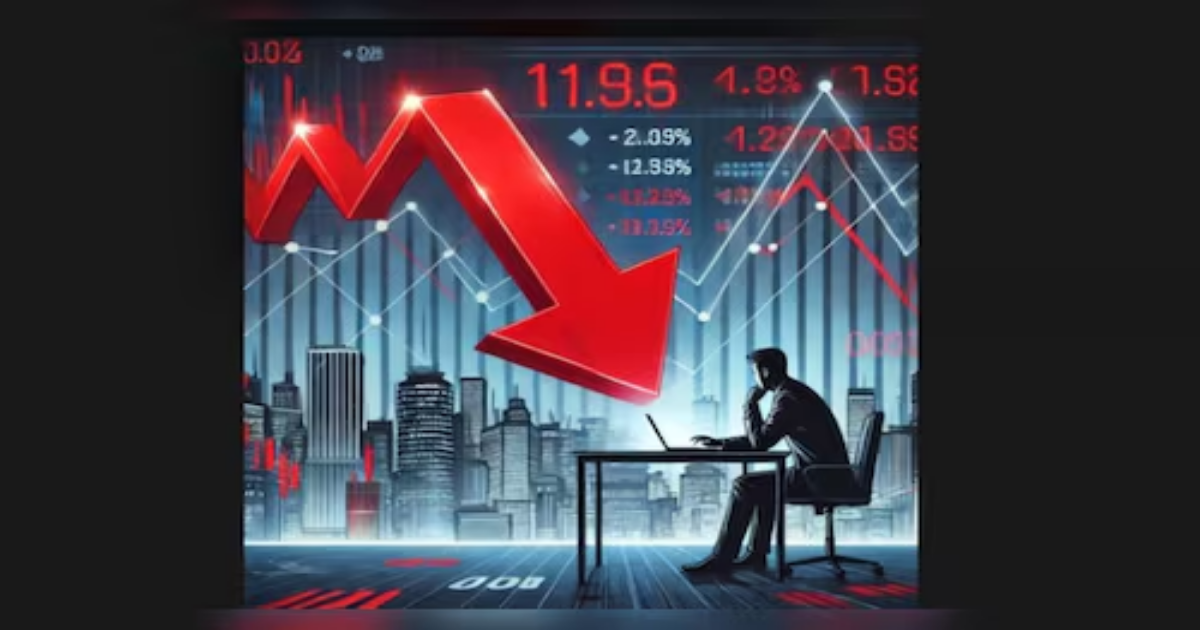US markets on Wall Street were knocked out on Thursday, April 3, as President Donald Trump’s sweeping tariffs wiped out as much as $2 trillion in market capitalisation within the first few minutes of trade.
The Dow Jones ended 1,700 points lower and has slipped into correction territory, meaning a 10% fall from its peak. The S&P 500 fell 5%, while the Nasdaq tanked 6%, shedding over 1,000 points during the day’s trade.
The pain is felt across asset classes. The US Dollar, a supposed winner from Donald Trump’s tariff plans, has extended losses to slip below the mark of 102, while a Bloomberg gauge of the Dollar fell the most on record. The Cboe Volatility index surged 40% in a single day to hit the mark of 30. Yield on the 10-year fell to 4.03%.
The dollar’s extended decline in the midst of a global selloff in risk assets has sparked a vigorous debate about whether it has retained its status as a haven during turbulent times, given the homegrown nature of the economic fears roiling macro markets. Hedge funds have increased their bearish bets on the dollar, mainly versus the yen and the euro, while also bracing for higher volatility into year-end, according to currency traders familiar with the transactions who asked not to be identified because they aren’t authorized to speak publicly. Crypto currencies are not immune to the sell-off either with Bitcoin falling 4.5%, while Ether fell 5.5%. Crude joined the sell-off in equities with the West Texas Intermediate declining 6.9% to $66.74 a barrel. Gold prices also saw profit booking, after nearing new records of $3,200 an ounce. The damage is the heaviest in companies whose supply chains are most dependent on overseas manufacturing, including giants Apple Inc., Nike Inc. and Walmart Inc. As spiraling tariff worries hammer US stocks, legendary investor Bill Gross is urging prospective dip-buyers to stay on the sidelines. “Investors should not try to ‘catch a falling knife’,” he said in an email. “This is an epic economic and market event similar to 1971 and the end of the gold standard except with immediate negative consequences.” Goldman Sachs Group Inc.’s trading desk has seen a level of activity on Thursday that’s practically “unheard of” apart from stock-market rebalancing days. It’s the busiest day for the desk since the emergence of Chinese AI startup DeepSeek rattled global markets in late January, John Flood, a Goldman partner and trading specialist, wrote in a note to clients. “Our desk is a 9.5 out of 10 in terms of activity levels and I would not be surprised to see close to 20 billion shares trade across all US equity exchanges today,” where the average this year is 15 billion, Flood wrote. Money managers have rolled back exposures to American equities to levels not seen since November 2023, according to a poll by the National Association of Active Investment Managers. Hedge funds dumped global stocks at the fastest rate in 12 years in March, according to Goldman Sachs Group Inc. data. The S&P 500 is at risk of staying below 5,500 — a key psychological threshold that, if broken by the close, would leave few levels to lure dip buyers, according to technical analysts, who monitor daily averages and other metrics to determine market momentum. That would retest this year’s intraday lows of 5,504.65 on March 13 and 5,488.73 on March 31.
(With Inputs From Agencies.)
